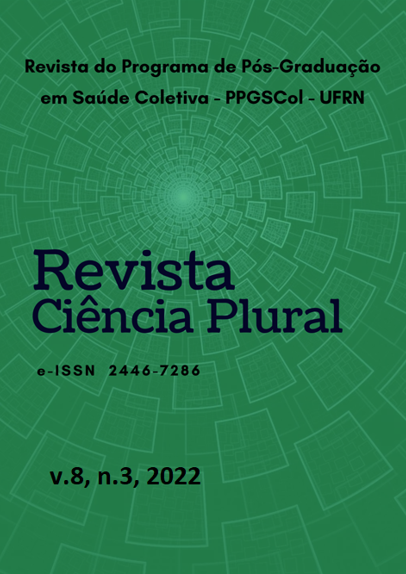Analysis of dental screening models
DOI:
https://doi.org/10.21680/2446-7286.2022v8n3ID29925Abstract
Introduction: Faced with the virtual reality of bureaucratic procedures, it is necessary to devise screening programs in school clinics with the aim of referring patients to the clinic more compatible with their needs, and to replace physical records an environmentally sound alternative. Objective: To evaluate the effectiveness of a computerized triage model, comparing it to the model currently used, in the Service of Dental and Documentation Dentistry (STDO) of the Dentistry Department of the Federal University of Rio Grande do Norte (DOD - UFRN). Methodology: The descriptive study consisted of a sample of 50 patients, who were submitted to the screening model currently used in the STDO of the DOD - UFRN and the screening with the application of a computerized program. The effectiveness of the device was evaluated and a comparison was made between the models. Statistical analysis was done using the intra-class correlation index, using a database created in SPSS (Statistical Package for Social Sciences), version 20.0, adopting a significance of 95% (p <0.05). Results: After statistical analysis, a correlation between the results of the software and the current triage model was obtained, an intra-class correlation coefficient of 0.578 was obtained, with the significance level, to evaluate the data obtained from (P <0 , 05), it was possible to show that there was a positive and significant satisfactory correlation between the software results and the current screening model. Conclusions: The results show agreement between the studied models and show that the use of these resources present satisfactory results. Notably, showing the advantage of using the computerized sorting model.
Keywords: Triage; Documentation; Electronic health records
Downloads
Downloads
Published
How to Cite
Issue
Section
License
Copyright (c) 2022 Revista Ciência Plural

This work is licensed under a Creative Commons Attribution-NonCommercial-ShareAlike 4.0 International License.
À Revista Ciência Plural ficam reservados os direitos autorais referente a todos os artigos publicados.

 Português (Brasil)
Português (Brasil) English
English Español (España)
Español (España)













